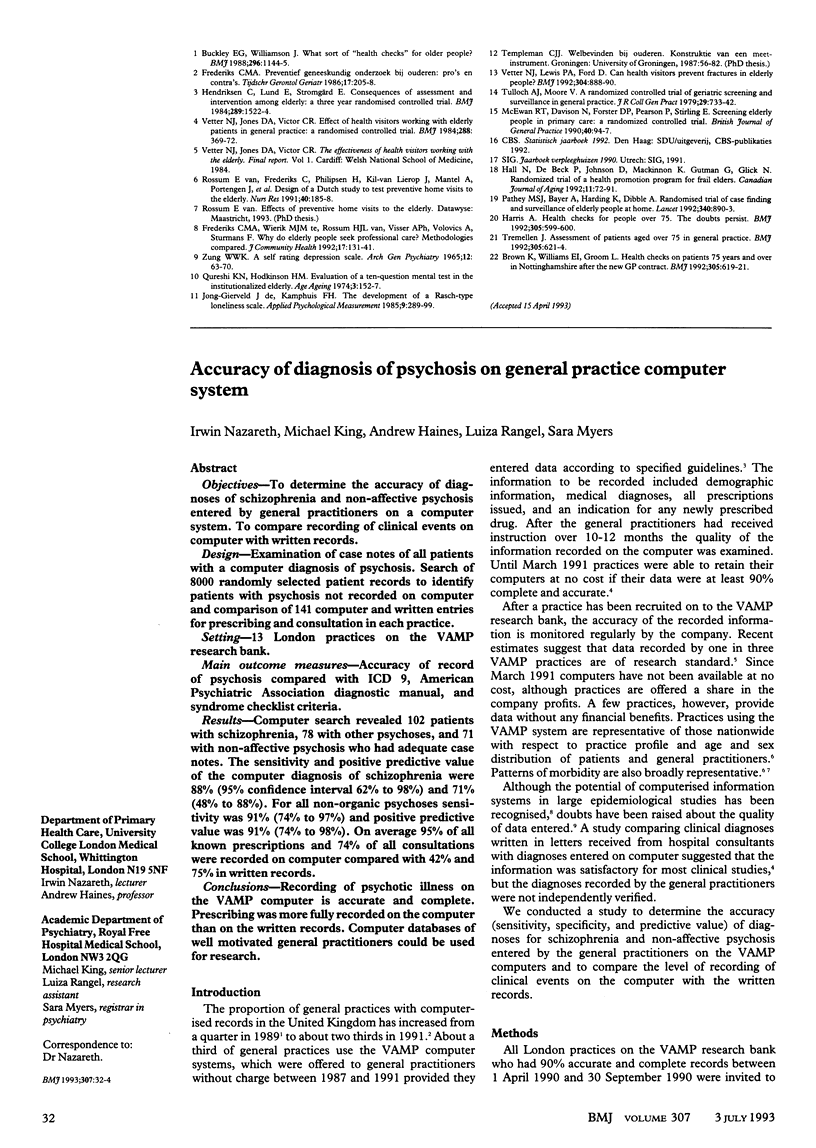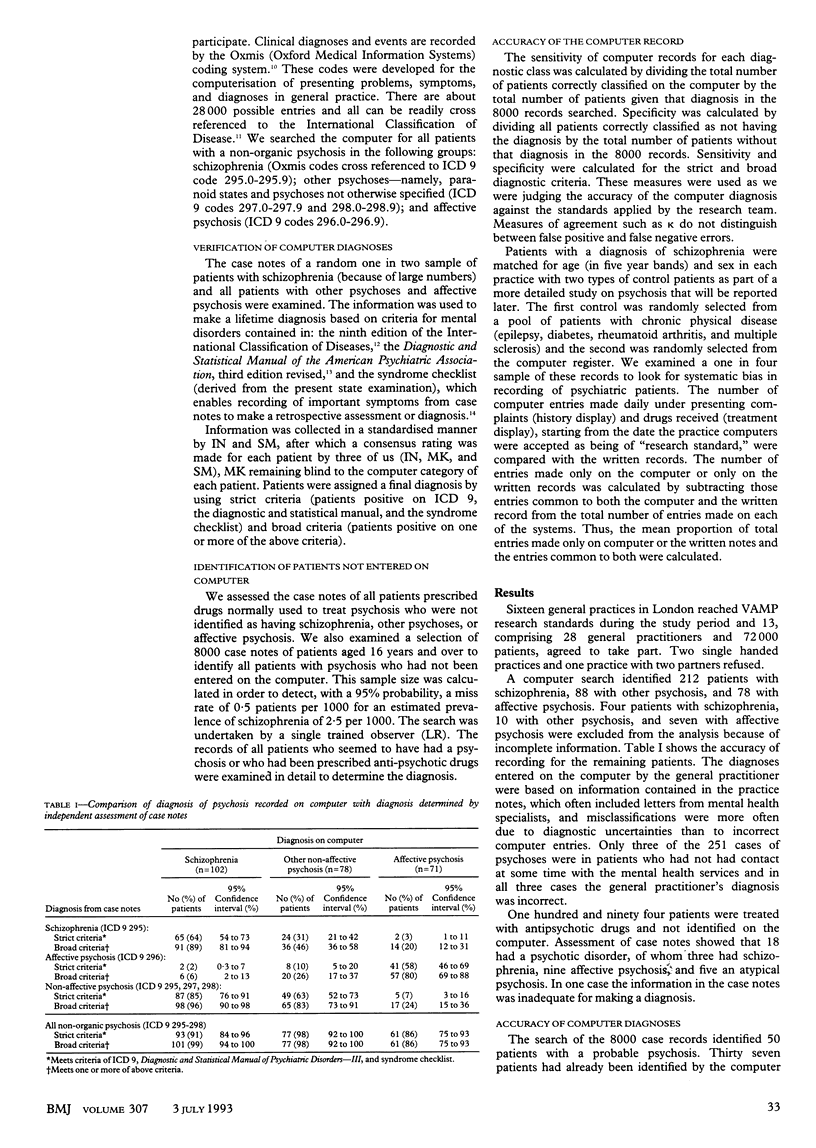Abstract
OBJECTIVES--To determine the accuracy of diagnoses of schizophrenia and non-affective psychosis entered by general practitioners on a computer system. To compare recording of clinical events on computer with written records. DESIGN--Examination of case notes of all patients with a computer diagnosis of psychosis. Search of 8000 randomly selected patient records to identify patients with psychosis not recorded on computer and comparison of 141 computer and written entries for prescribing and consultation in each practice. SETTING--13 London practices on the VAMP research bank. MAIN OUTCOME MEASURES--Accuracy of record of psychosis compared with ICD 9, American Psychiatric Association diagnostic manual, and syndrome checklist criteria. RESULTS--Computer search revealed 102 patients with schizophrenia, 78 with other psychoses, and 71 with non-affective psychosis who had adequate case notes. The sensitivity and positive predictive value of the computer diagnosis of schizophrenia were 88% (95% confidence interval 62% to 98%) and 71% (48% to 88%). For all non-organic psychoses sensitivity was 91% (74% to 97%) and positive predictive value was 91% (74% to 98%). On average 95% of all known prescriptions and 74% of all consultations were recorded on computer compared with 42% and 75% in written records. CONCLUSIONS--Recording of psychotic illness on the VAMP computer is accurate and complete. Prescribing was more fully recorded on the computer than on the written records. Computer databases of well motivated general practitioners could be used for research.
Full text
PDF


Selected References
These references are in PubMed. This may not be the complete list of references from this article.
- Farmer A. E., Wessely S., Castle D., McGuffin P. Methodological issues in using a polydiagnostic approach to define psychotic illness. Br J Psychiatry. 1992 Dec;161:824–830. doi: 10.1192/bjp.161.6.824. [DOI] [PubMed] [Google Scholar]
- Johnson N., Mant D., Jones L., Randall T. Use of computerised general practice data for population surveillance: comparative study of influenza data. BMJ. 1991 Mar 30;302(6779):763–765. doi: 10.1136/bmj.302.6779.763. [DOI] [PMC free article] [PubMed] [Google Scholar]
- Marcus A. A plan for information in the National Health Service. Lancet. 1988 Nov 26;2(8622):1242–1243. doi: 10.1016/s0140-6736(88)90823-9. [DOI] [PubMed] [Google Scholar]
- Pringle M. The new agenda for general practice computing. BMJ. 1990 Oct 13;301(6756):827–828. doi: 10.1136/bmj.301.6756.827. [DOI] [PMC free article] [PubMed] [Google Scholar]


